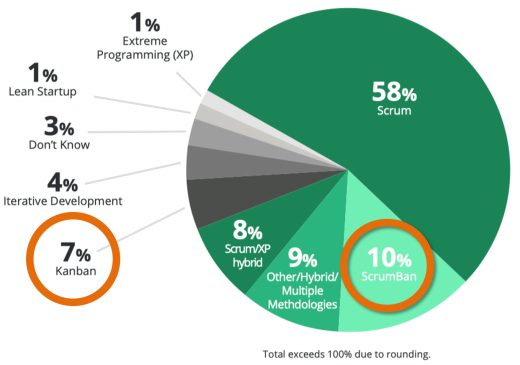Kanban Boards, Task Lists, and Understanding the Differences
As your business grows, it needs various software tools for different purposes. Project management software is an important one. But these tools come with different features and functionality to meet the different demands of organizations.
In a nutshell, Project management is the application of processes, methods, skills, knowledge, and experience to achieve specific project objectives according to the project acceptance criteria within agreed parameters.
There are many project management tools in the market. All these tools have evolved over time, tweaked their existing features, and added new ones in response to the growing demands of modern teams and processes.
Accordingly, task management features such as task lists (“to-do” lists) and Kanban boards in use in their system have also evolved. Most project management companies have now included either task lists or Kanban boards. Some companies have mixed the two styles to give a better experience.
Task List Vs Kanban Board
A task list is a prioritized list of all the tasks that need to be completed in a certain amount of time. It is a prioritized set of activities one needs to do to complete a project. It is the worklist for the entire project team that contains all vital information about the tasks.
In other words, task lists are itemized lists that outline specific team member assignments and due dates.
But which of these two tools is ideal for your project?
Before making a comparison of different project management tools and settling on one, you should first consider your team’s specific needs, work dynamics, industry, and team size.
Let’s look at the various aspects of the Kanban board and task lists.
Task List
A standard task list helps team members recall ideas, notes, and tasks in an orderly manner. It also tracks a project from beginning to end and assigns responsibilities to individual owners. Each task remains with that owner until it is completed, which can be later fed into a larger project workflow.
A key advantage of the task list is that it removes clutter from daily or weekly to-do lists and provides a place for miscellaneous tasks. In addition, it allows one to prioritize more important tasks. It also means less waste of time and effort.

It, however, has several drawbacks. One, it gives you an excuse to remove tasks from your to-do list that you should do but can delay. This means you can avoid these tasks for a long period, which promotes procrastination and task avoidance. Moreover, a lengthy running to-do list looks awkward.
In this situation, a nested task list would be ideal. Nested task lists provide the logical hierarchy to accommodate more complex tasks that require teamwork and collaboration.
However, nested task lists are not perfect either. They are still separate lists that divide a task’s context, which cannot be displayed effectively in a user interface.
This is Where Kanban Boards Become Relevant.
The term “Kanban” originated from two Japanese words ? (kan) and ? (ban). When joined, it means “a board to look at.”
A Kanban board is a simple system for creating products based on continuous deliveries. It is a tool for workflow visualization. Visualizing the workflow and tasks on a Kanban board helps the teams better understand the processes and have an overview of the workload they have. A Kanban board shows the progress of each member’s work.
A brilliant visual tool, the Kanban board gives you an overview of the current work status and simplifies team communication. In essence, it can help avoid feeling overwhelmed by the endless standards task lists that we have created.
Visualizing work on a kanban board will boost productivity and eliminate chaos from your workplace. It also provides better visibility, prevents team overburden, improves collaboration, and allows better predictability.
While both traditional and nested task lists are beneficial for planning a project, the Kanban board allows for better collaboration and execution. This is why some project management tools have incorporated both these styles into their system.
However, a problem is that most project management tools offering both features treat them as two separate worlds. This is not a great approach. A better approach is to synergize both approaches and allow members to access a single project in both Kanban board and nested task list views.
So there’s no one right way to manage projects. Both List views and Kanban views offer advantages and disadvantages.
Business & Finance Articles on Business 2 Community
(117)


